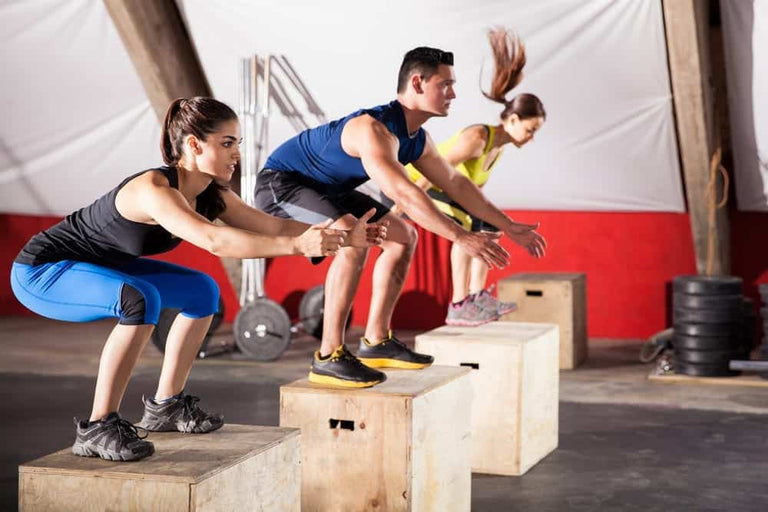Even though it’s lost some popularity in the fitness world recently, cardio is important. As it’s full name – “cardiovascular”- suggests, cardio focuses on your heart. And your heart is pretty key to your overall… being alive. Another – less common – term for cardio, however, is cardiopulminary training which also highlights the involvement of the lungs. Cardio, then, trains (and improves) your heart and – by extension – your body’s ability to transport nutrients and oxygen throughout your entire system.
Regardless of your chosen sport or training style, then, it’s important to include some form of cardio in your schedule. And this used to be pretty straightforward. When it came to cardio day, you would simply run (or cycle or swim) until you couldn’t run (or cycle or swim) any more. That’s it. Cardio done, right?
Within the past few years, this classic and common approach has come under fire. Let’s take a look at these two battling cardio-camps to understand the pros and cons of each.
What’s the Difference?
The type of cardio mentioned above, where you settle into a speed and stay there for an extended period, is officially called steady-state (SS) cardiovascular training. Since most people need to dial back their pace a little to keep running for long stretches, this is also sometimes called “slow cardio.”
The challenger that has largely replaced SS for many people is high-intensity interval training (HIIT). Although it’s not actually a “new” training method, HIIT was largely ignored until recently when it became popularized by things like Tabata, Crossfit and Insanity – which all have their own takes on the technique. And that’s part of HIIT’s appeal: there is a massive potential for variation. Essentially, in it’s most basic form, HIIT involves short bursts of intensity activity followed by periods of lower intensity. This basic cycle is repeated for the length of the workout.
So, now that it’s clear exactly what we’re talking about, let’s take a look at the specific strengths and weaknesses of each training method.
Pros and Cons of HIIT
The first thing that catches people’s attention – especially for those who normally dread cardio day – is that HIIT workouts are typically very short. A quality HIIT workout can be completed in about 20 minutes. If you’ve ever spent 90-minutes running at the same pace on a treadmill, this is probably a very appealing concept.
Thanks to those bursts of sprinting, HIIT also involves a strength component that is lacking from SS routines. This effect is increased in programs like Crossfit that actually incorporate weightlifting. Along with just making things more challenging, this feature produces two great results. First, HIIT burns more calories in less time. Second, the activation of more muscle fibers means that you will continue to burn more calories even after your workout is over. One study found that women who did just 20-minutes of HIIT lost 3x times more fat than those that did 40-minutes of SS.
And then, of course, HIIT will help to increase endurance and overall athletic performance. But, not in the same way that SS will – as we’ll consider a little later.
Before you totally ditch SS for HIIT, remember what HIIT stands for: High intensity interval training. HIIT is hard and, as such, may not be the best choice for beginners or those with preexisting heart conditions. Many HIIT routines are also relatively high-impact which would make it a poor choice for those with injuries or joint problems.
Pros and Cons of SS
It should be made clear, though, that SS is still a totally viable way to lose weight. To a point. As you run, your body adapts and that workout gradually becomes less and less challenging. This means that, eventually, that same run will no longer have the same effect on you and you will have to run faster and for longer to burn the same amount of calories. While this isn’t impossible, it could be a limiting factor if you don’t have a lot of time to commit to your workouts.
There are also plenty of experts – backed by studies – that claim that too much cardio could actually be making you gain weight instead of losing it. Those extended sessions could make your body think that you are in danger, causing it to release cortisol (AKA “the stress hormone). Among it’s many functions, cortisol causes your body to hold on to fat and generally slow your metabolism down.
Long-lasting SS sessions could also cause your body to turn on your muscles for fuel – another result of cortisol. Since you work hard for those muscles, this is not what most would term a “desirable result.”
All that being said, if you’re an endurance athlete, SS training is the way to go since it is solely focused on building cardiovascular endurance – HIIT is more of a crosstraining effort. When training for an endurance event, then, you’ll probably spend the vast majority of your training time engaged in SS cardio – which makes complete sense.



